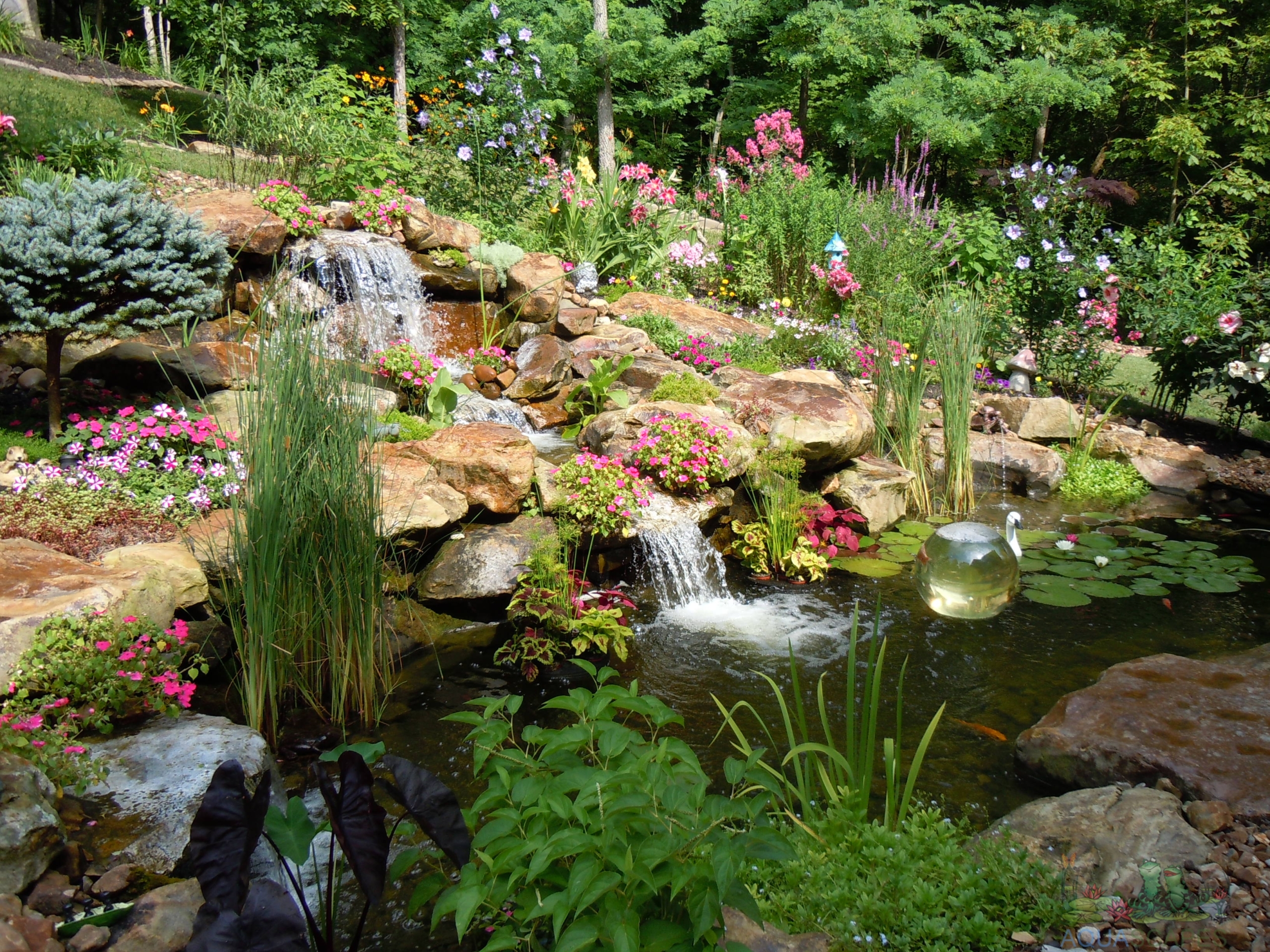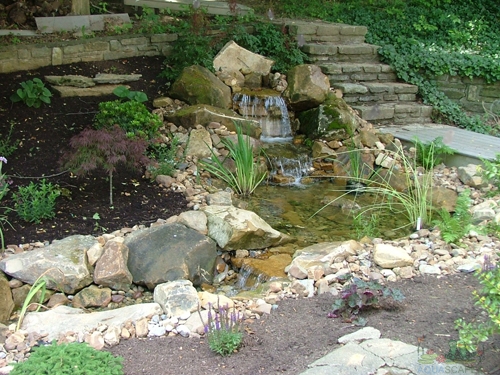How To Choose The Correct Pond Pump
Choosing a pump for your pond or fountain is a crucial step to ensure you maintain proper water movement. Failure to keep the water adequately circulated can result in stagnation, algae buildup, and mosquitoes. In addition, if you have fish, plants, or other aquatic life in your pond, you must keep the water healthy by evenly distributing the oxygen levels and other nutrients.

Types of Pond Water Pumps
There are two main types of pond water pumps: submersible and external (out-of-pond), also known as centrifugal pumps. Depending on the application, each pump offers specific advantages.
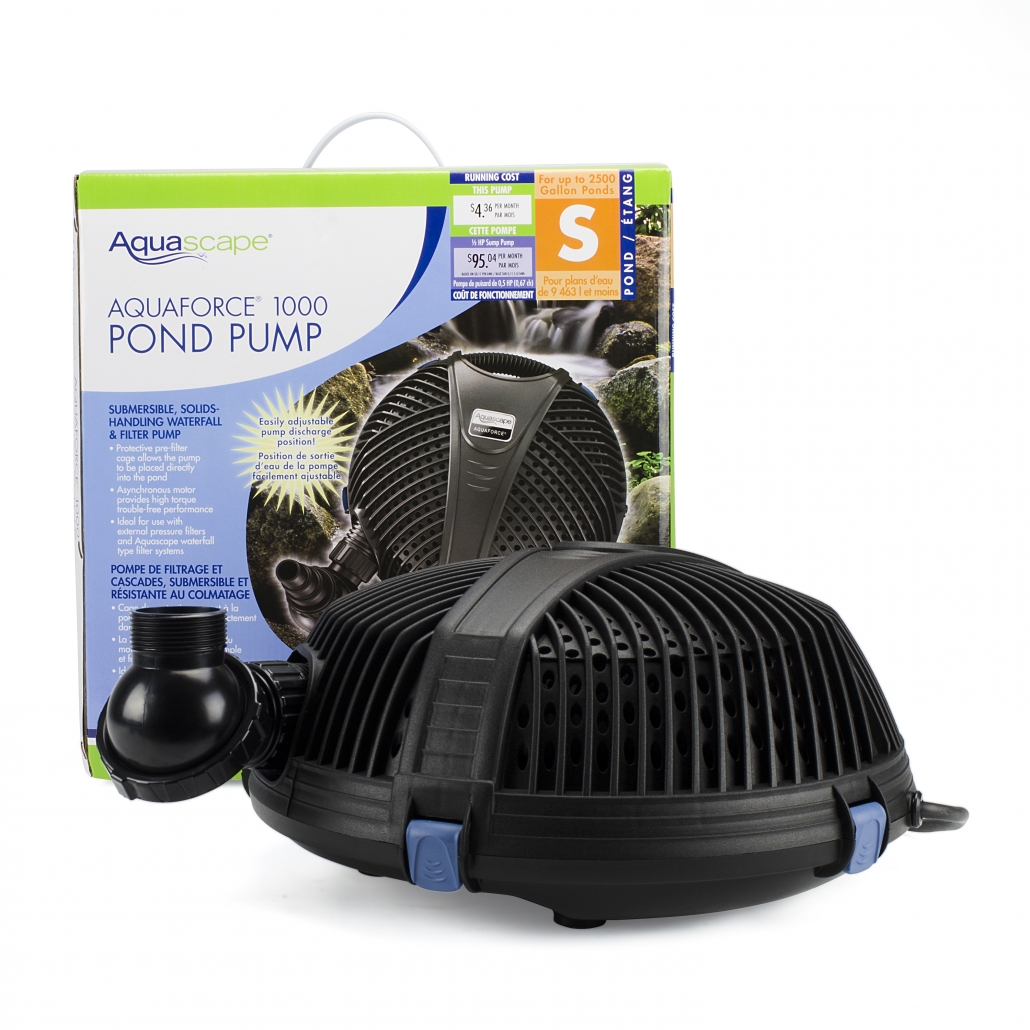
Submersible Pond Pumps
Submersible pumps are designed to be fully submerged underwater at the deepest part of the pond. They are placed directly into your pond or in a skimmer box or pond vault. Submersible pumps range in size from 50 to 5,000 gallons per hour. They are easy to install and are sometimes a more economical solution for smaller ponds (up to 1000 gallons of water). They are also quiet and can also be used to drain your pond. If you have fish or other aquatic life in your pond, you may want to consider a model that does not use oil because there is a danger of the pump seal breaking and oil coolant leaking into the water.
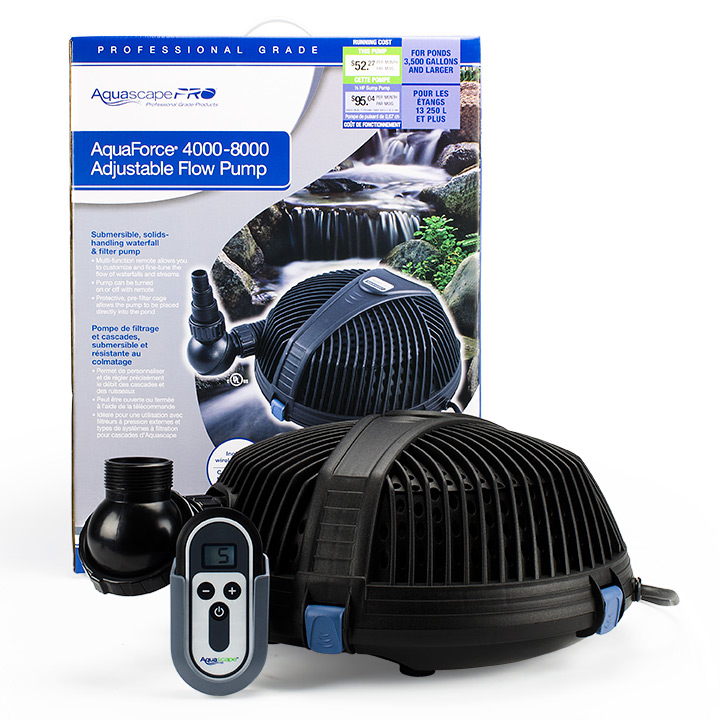
Centrifugal Pond Pumps
External or centrifugal pond pumps are a reliable, energy-efficient option. They are installed in a dry location near your pond. External pond water pumps are suitable for larger ponds (over 1000 gallons). Compared to a submersible pump, they are typically louder and more complicated to install; however, they are easier to maintain.
When selecting a pond pump, it’s essential to keep in mind that pumps have different cord lengths. Ensure the cord is long enough to go through the pond and plugin far away from the water. Some electrical codes specify that the outlet for water features must be at least 6 feet away from the water. Therefore, it is recommended that you avoid using an extension cord. However, if you must use one, make sure it’s suitable for outdoor use and plugged into a ground fault circuit interrupter (GFCI) so that it will immediately shut off if there is an overload.
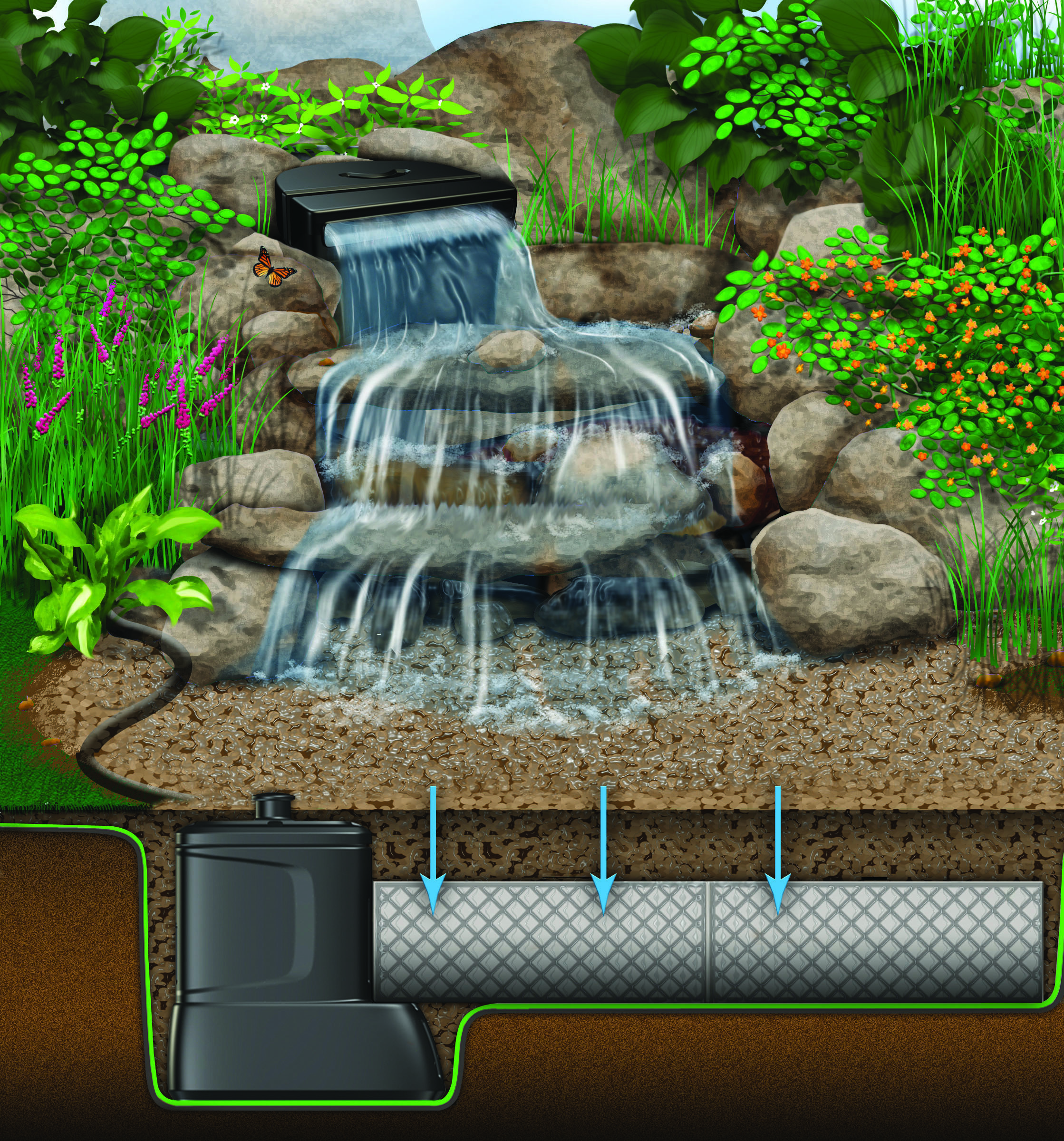
How to Size a Fountain or Pond Pump
Pond pumps are sized by gallons per hour (GPH) at one foot of lift or height. Larger capacity pumps are rated by horsepower (HP). To determine the size pond pump, first, you need to calculate the volume of water in the pond. To calculate the volume of water in gallons, multiply the length x width x average depth x 7.5.

Water Circulation Factors
It is recommended that pond water is circulated at least once per hour. For example, if you have a 500-gallon pond, you need a pump that runs 500 gallons per hour at the discharge height. If your pond has a pressurized filter, you ideally want to turn the water approximately once every two hours. For example, if you have a 1000 gallon pond, you need a pond pump rated at a minimum of 500 GPH. If your pond has a skimmer or waterfall, the water should be turned approximately once every hour. Therefore, if you have an 1800 gallon pond, you will need an 1800 GPH rated pump.

Calculating Head and Lift Height
Two of the most critical measurements in sizing a pond or fountain pump are the maximum head height rating and maximum lift. Head height means the vertical height the pump raises water above the surface of the pond. The pond fountain pump’s top height can lift the water to is called “Maximum Head” or “Max Head.” The “Head” is measured straight up from the water level of the pond. Its length then measures any horizontal/diagonal flow, and 1’ of “Head” added per 10’ of horizontal/diagonal distance. To calculate the lift, you need to measure how far the water in your fountain has to travel from the pump’s location in your rush to the top of the fountain where the water comes out. Then you need to select a pump that lifts higher than that measurement. For example, if that distance is 24”, than you will need a fountain pump that lifts at least 36” tall. The “maximum lift” is the maximum height that the pump will raise the water.
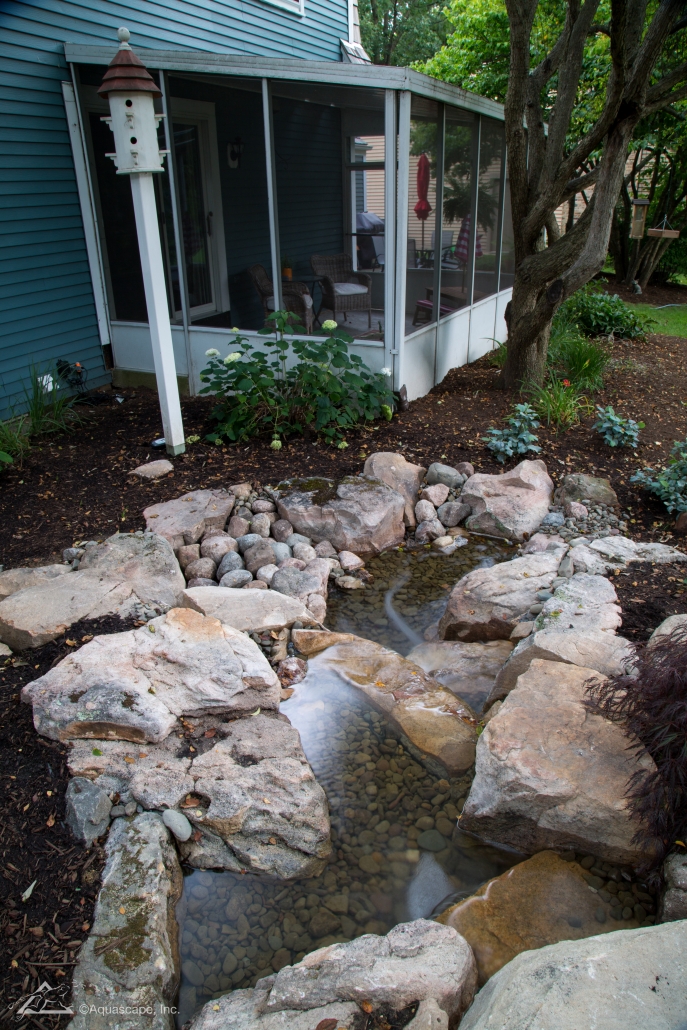
Selecting the Proper Pond Water Pump Tubing
It is also essential to use the correct tubing size because it directly affects the pond pump’s maximum lift capability. If you use smaller tubing than specified, you will limit the pump’s maximum lift and the amount of water circulated.
Choosing the right pond water pump for your pond or fountain requires careful consideration and a little upfront research. However, doing so will go a long way toward keeping your water clean and healthy and your pump operating efficiently.
Best Rocks for a Pond Installation
When selecting rocks for use around the pond, it’s important to pick options that are sturdy, durable, and non-toxic.
Importance of Spring Cleaning your Water Garden
When the flowers bloom and birds start singing, spring is in full swing. The promise of good weather brings us outdoors to enjoy nature’s beauty and witness its blossoming rebirth; but have you considered just how important a role your water garden plays in this seasonal process?
How to Install a Homemade Pond Waterfall Guide
How to Install a Homemade Pond Waterfall Guide
Have you ever imagined listening to the tranquil sound of trickling water in your own backyard? Installing a pond waterfall can be an excellent way to create a calming outdoor space for you and your family. Not only will a backyard pond set the scene for relaxation, but it can also increase property value and improve curb appeal. Luckily, installing one isn’t as hard as it may seem! In this blog post, we’ll provide an ultimate guide for adding a homemade pond waterfall to your yard—including which materials are needed and how long installation takes. Read on to find out more about creating this soothing addition to your home’s landscape!
Gather the necessary tools and materials
Gearing up for a project is always exciting, but it can be a bit overwhelming if you don’t have all the tools and materials you need. Whether you’re building a piece of furniture or tackling a DIY home renovation, it’s important to gather everything you require beforehand. Not only does this ensure that you’ll have everything you need to start, but it also helps you make a plan and organize your time effectively. So before diving into any project, take some time to assess what you need and make a list of all the necessary tools and materials. Trust us, it’s worth it!
Create a plan for your pond waterfall and choose the best location
A pond waterfall can be a beautiful addition to any backyard, providing both visual interest and the soothing sound of flowing water. When planning your waterfall, it’s important to choose the right location. Consider factors such as the size and shape of your pond, the overall design of your outdoor space, and the availability of power sources. You also want to make sure the waterfall is visible from the main seating area, so you can enjoy its calming effect. With careful planning, you can create a stunning pond waterfall that will become the centerpiece of your yard.
Dig out the area for the pond and line it with a waterproof membrane
Creating a pond can be a beautiful addition to any backyard. However, the process of digging out the area and lining it with a waterproof membrane can seem daunting. But fear not, for with a little bit of hard work and dedication, your dream pond can become a reality. Digging out the area may require some manual labor, but the end result will be worth it when you see the tranquil water reflecting the sunlight in your yard. And by lining it with a waterproof membrane, you will prevent any leaks or unwanted water loss. So grab your shovels and let’s get to work on creating the perfect backyard oasis!
Add rocks, plants, and other decorations to make your pond look attractive
A pond is not just a body of water; it’s an ecosystem that can bring life and beauty to your backyard. Adding rocks, plants, and other decorations is a simple and effective way to enhance the visual appeal of your pond. Natural rocks of different shapes and sizes can contribute to a stunning, layered effect that mimics the way you might see rocks in a stream or river in nature. Plant life like lily pads, lotus flowers, and cattails not only add color and dimension, but also provide shelter for fish and other wildlife. And don’t forget about other pond decorations like fountains, statues, or even a small bridge to further personalize your aquatic oasis. The possibilities are endless when it comes to making your pond look attractive!
Install a water feature, such as a fountain or waterfall
Adding a water feature to your outdoor space can completely transform it into a calming oasis. Whether you choose to install a fountain or a waterfall, the sound of cascading water is sure to soothe your soul. Imagine lounging on a nearby patio with a book in hand, lulled into relaxation by the rhythm and flow of the water feature. Or perhaps you’d like to entertain guests on a warm summer evening, dining al fresco next to your stunning new addition. Whatever your vision, adding a water feature is a surefire way to elevate your outdoor space and create a serene environment for all to enjoy.
Put in an aerator to keep water oxygenated and healthy for fish
When it comes to keeping fish healthy and thriving in an aquarium, one of the most important factors is making sure the water is well oxygenated. This is where an aerator comes into play. By introducing air into the water, an aerator helps to promote the growth of beneficial bacteria and keep the water clean and healthy for your fish. It also helps to prevent the buildup of toxins and harmful gases that can be deadly to your fish. Overall, investing in an aerator is a simple and effective way to ensure the long-term health and happiness of your aquatic pets.
Building a pond waterfall can be an exciting and gratifying experience, as it’s sure to bring hours of enjoyment to your garden or backyard. With the right materials and design plan, you can create a beautiful and unique water feature that will not just look amazing but also benefit from the ecosystem of your garden or yard. Remember to always stay within safety guidelines when building a pond, such as keeping children away when using tools and ensuring that the pond is properly sealed against leakages. Overall, creating a tranquil and graceful water feature is easy if you follow all of these steps correctly. Good luck in constructing your wonderful new backyard oasis!
Check out our store for all your water gardening needs! Aquascape products are Aquascape Inc. Certified.
Thanks for reading at Meyer Aquascapes! We hope you’ve enjoyed our post on garden pond design. Please leave a comment below if you liked it or have any questions. We’d love to hear from you! Thanks for stopping by!

 meyer aquascapes
meyer aquascapes